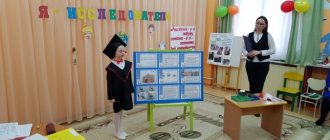All kinds of professions are important for people: teacher, accountant, hairdresser, cook, builder, fireman, driver, engineer, veterinarian salesman - they all benefit humanity, and without them it would be very difficult for us.
Already in childhood, children know exactly what they want to become in the future. They imagine themselves as astronauts, pilots, and dream of a beautiful and necessary business in their life. Subsequently, this passion passes, and the child can choose a completely different profession. But it is very important for children to know what its representatives do and what difficulties they will encounter.
Pictures for children will help tell children about professions.
How to work with the material?
Here you can download free pictures of various professions for children. They are suitable for thematic classes, both at home and in early development clubs, in junior schools. Your child will get to know such professions as: secretary, carpenter, cook, reporter, tour guide, policeman, director, welder, courier, nun, psychic, inspector, dentist, pharmacist, drummer, driver, artist, stylist, district police officer, waiter, nurse, flight attendant, bellhop, pilot, architect, nanny, doctor, singer, guide, cashier, musician, ceramic artist, fireman, hairdresser, photographer, salesman, engineer, veterinarian, teacher, accountant, builder.
Cards
Consider with your children the people depicted on the cards. Tell us what this or that person does, what his profession is. If the child knows the professions, then let him first tell what he knows about these jobs, and then you will complement him. Help your child tell stories about professions in pictures.
Pictures and discussions on the topic of professions for children as a whole can be downloaded here:
Little Genius (cards and conversation on back)
Professions (children's cards)
More
See more on the topic of educational games for children with your own hands:
- Educational game for children “Where is whose baby”
- We tell children about professions, part 1
- Do-it-yourself lotto for children “Vegetables and fruits”
- Educational game Lotto “Surrounding objects”
- Educational cards for children “Items of clothing”
- Teaching a child time, making a clock.
- Educational cards for children “Studying the animal world”
- Educational cards for children Lotto “Toys and items for babies”
“All professions are needed, all professions are important” (cartoon song for kids) Kino channel / Paramult film company
What's the best way to tell it? (With examples)
- For example, let's talk about the profession of a doctor. A doctor is a very necessary profession. The doctor is dressed in a white coat and has a special cap on his head. This is a doctor's form. The doctor treats children and adults from diseases. The doctor works in the hospital. For his work, he needs special tools, such as a phonendoscope, syringe, thermometer, etc. The profession of a doctor is needed in order to protect and treat people from various diseases. With the help of these profession cards in pictures, your child will expand his horizons, learn a lot of new things, develop speech, especially important for 3 years old, and memory. You can download professions in pictures here completely free of charge - click on the image below to download for free:
- A seller, for example, sells goods in a store. This profession requires communication skills and accuracy. The seller must also be able to count well, and the child’s attention should be focused on this.
- An engineer is a complex technical profession that requires good knowledge of mathematics and technology. An engineer can find use in a factory when creating new technical developments.
- A driver is needed everywhere. This is not just a person who drives a taxi. Drivers are required at enterprises, at construction sites, for intercity cargo transportation, etc. This profession requires endurance, attention and, of course, the ability to drive a car.
- A veterinarian treats animals. He must have a medical education. And, of course, the veterinarian must love our little brothers.
- The cook loves to cook, but he does it according to culinary standards and requirements. A cook is needed not only in canteens or restaurants, but also in organizations, schools, and kindergartens.
- The builder participates in the construction of houses. This profession requires physical strength. Construction is a very necessary profession.
- The hairdresser does our hair. A hairdresser must have dexterous hands and a subtle artistic taste.
- An accountant calculates costs and profits at enterprises, firms, and organizations. An accountant must have an economic education and have mathematical abilities.
- A teacher is a rather difficult profession. It is necessary not only to be able to present the material in an interesting way, but also to organize the children’s work. The teacher must have moral restraint and tact, and know his subject well.
Pictures for children on our website will help children learn more about professions and feel what their future recognition will be. The main thing is to instill respect in children for any type of activity. Whoever it is - a fireman, a teacher, a doctor, a builder, a driver - the work of any person must be treated with care.
Didactic games on the topic “Professions” 3-4 years
Didactic games
Didactic board game on the topic : “ Professions ”
.
for children 4-7 years old
Goal: expand children's understanding of various professions , their names and types of activities. Introduce tools and instruments needed by people of these professions and relate them. Foster respect for the work of adults.
Progress of the game: Participants are asked to take turns naming the professions that they already know and the tools that people in these professions , then try to correlate the actions of people with their profession , forming corresponding verbs from nouns (educator - educates, builder - builds, etc.)
.
The teacher draws the children's attention to the fact that unusual chests have appeared in the group, people of different professions , but they are empty, all the tools are mixed up, and people cannot work. Give the children a chest each. Then the adult invites one participant at a time to his table (everyone can sit at a round table)
. He takes the card and says what is shown on it. The rest of the children must name someone, this item is needed for work, and put it in the chest. If the children find it difficult to answer, explain what it is like with children, remember where they saw such an employee.
Let's show the doll how a hairdresser works
Goals:
· Clarify knowledge about the work of a hairdresser;
· Continue to formulate the idea of the need to maintain a clean body and a neat appearance.
Equipment:
2 dolls, attributes for playing hairdresser.
Contents of the game.
The teacher brings a large doll, which says that it came from another kindergarten, where the children do not know how to play hairdresser. The teacher asks to help the doll, tell and show how to play this game.
The teacher clarifies with the children what items are needed, how to prepare the place for the game, and offers to explain and show the actions of the hairdresser. The scope of actions depends on the children’s corresponding ideas.
Let's make beautiful hairstyles for the dolls
Goals:
· Strengthen the skills of caring for hair, etc.), asks to put them in order, to do their hair. She clarifies what items are needed for this, draws attention to the fact that the dolls’ hair is of different lengths, so their hairstyles should be different. The teacher suggests remembering what hairstyles can be made from long and short hair and shows some techniques; children continue to work with hair;
· Specify the names of the items required for this;
· Form the concept of “neat appearance.”
Equipment:
dolls with hair of different lengths, hair care items.
Contents of the exercise.
The teacher draws the children's attention to the unkempt appearance of the dolls (they are without socks and shoes, their hair is not neat)
«Determine the profession by subject
».
Goal: To consolidate an understanding of the purpose and functions of objects of labor, the ability to group them by method of use.
Procedure: Children take turns taking out objects from the bag (ladle, cotton wool, coins, comb, paint, threads, syringe, etc., which are necessary for one or another professional activity. Task: for the object, name the profession in which it is used.
"We're going to work"
Target:
teach children to navigate the space of the room, find their place in accordance with visual landmarks - pictures depicting professional symbols. Develop attention and memory during this game.
Game actions:
moving around the room (depicting a car ride) and finding a chair or place with the corresponding professional symbols (picture).
Game equipment:
“rudders” (circles with people of different professions drawn in the middle) are laid out on the teacher’s table; there are chairs in different places in the room, with pictures depicting tools on them.
Progress of the game:
the teacher invites the children to his table, everyone can choose a profession, take the steering wheel and go to work, to do this you need to carefully look at the chairs and choose a picture with a tool suitable for this job. The game is played several times, the teacher rearranges the pictures on the chairs, and the children must find their place again. Then the children change rudders (professions), and the game is repeated
“What does Masha want to do?”
Target:
clarify children’s ideas about certain work activities; about materials, tools and equipment needed for work.
Progress of the game: in
The teacher addresses the children on behalf of Masha (doll):
- Masha asks me for a basin, a bucket of water and soap.
Submits the objects she calls to the doll.
- What do you think she will do? (Wash.) That's right. And now Masha asks to give her a saucepan, milk, sugar, salt and millet. What is Masha going to do? (The doll wants to cook porridge.) What is the name of the porridge? (Millet.)
Other work activities that require appropriate items can be considered in a playful form. The kids are shown these items (an iron and a stack of doll's laundry - for ironing; a bucket and a watering can - for watering the beds, etc.).
When playing this game with older children, the teacher uses pictures depicting objects corresponding to a particular type of labor, or simply lists these objects (without showing illustrations), asking the children to guess more complex labor processes. For example: scissors, colored paper, glue, ruler, pencil - gluing books, repairing boxes, paraphernalia.
The game can be complicated: one child draws objects on the board, and the rest of the children guess the type of work, or all children simultaneously draw on paper, and then show the drawings to each other and guess.
«Guess what I'm doing?
Target
: expand children’s understanding of labor activities; develop attention.
Progress of the game:
The teacher and children join hands and stand in a circle. A child comes to the center of the circle. Everyone goes in a circle and says:
We don’t know what you’re doing,
Let's take a look and guess.
The child imitates labor actions not only with movements, but also (if possible) with sounds. For example, he cleans the floor with a vacuum cleaner, hammers a nail, saws, drives a car, does laundry, carries a bucket of water, wipes a mirror, chops wood, grates, turns something in a meat grinder, etc.
Children guess the actions.
“What do they do with this object?”
Target:
teach children to select words indicating the action performed by the object and who uses this object.
For example:
With a brush - (what are they doing?) - Drawing, (who?) - Artists, children.
With scissors - (what are they doing?) - Cutting, (who?) - Cutters, hairdressers.
With a needle - (what do they do?) - Sew, (who?) - Seamstresses, embroiderers.
With a shovel - (what are they doing?) - Digging, (who?) - Gardeners.
With a pen - (what do they do?) - Write, (who?) - Teachers, writers, accountants.
With an ax - (what are they doing?) - Chopping (who?) - Carpenters, foresters.
With a thermometer - (what are they doing?) - They measure the temperature, (who?) - Doctors, weather forecasters.
With a ruler - (what are they doing?) - Measuring, (who?) - Engineers, designers, schoolchildren.
With a broom - (what are they doing?) - Sweeping, (who?) - Janitors, etc.
“For a person in what profession is this necessary?”
Target:
expand children’s understanding of the items necessary for a person in a certain profession.
Progress of the game:
Scales, counter, goods, cash register... - to the seller.
Broom, shovel, hose, sand, crowbar, snow blower... - to the janitor.
Washing machine, bath, soap, iron... - to the laundress.
Comb, scissors, hair dryer, shampoo, hairspray, hair clipper... - to the hairdresser, etc.
"Guess the profession"
Target:
expand children’s understanding of the profession; find out what profession we are talking about.
Progress of the game:
This person is the owner of a wonderful palace of books. She is sincerely glad to see everyone who comes to visit her. And most importantly, guests will never leave her empty-handed. She gives them interesting books to take home. After reading, they can be exchanged for others. She will always help young and adult readers find the right book. (Librarian).
When you are hungry and come to the group for lunch, it already smells delicious. Who did this hard? Who prepared this tasty and aromatic dish? This is her favorite pastime, she does it with great love, that’s why everyone likes the food so much. For what a person does with pleasure and love brings joy not only to herself, but also to everyone else. Who is this? (Cook).
And this man greets his patient with a smile, quickly drives away unbearable pain, and cures all kinds of diseases. Once in his childhood, this man came to the aid of sick animals and loved ones, because he loved them very much and tried to reject the pain. And then I realized that I couldn’t live without it, so I studied for a long time and became (a Doctor).
When you come to kindergarten, everything around you is clean, comfortable, and fresh air. Not a speck of dust anywhere. The floor has been washed, the glass on the windows is so transparent that it is almost invisible. This person loves cleanliness very much and does his job with pleasure. She has great talent for this. Whose hands is this work? (Cleaners, assistant teacher).







